Expert’s Rating
Pros
- Good ride quality
- Quiet motor
- Removable battery
- 7-speed Shimano gears
Cons
- No suspension
- Keypad system feels like a gimmick
- No handlebar height adjustment
Our Verdict
The Fiido X V2 is a superb folding e-bike which rides exceptionally and has just about all the features you’d want. It’s well priced, too.
Price When Reviewed
$1799
Best Prices Today: Fiido X
In the summer of 2021, Fiido announced the follow-up to its folding e-bike, the D11.
We reviewed the D11 in 2020 and although we liked it, there were some obvious improvements that could be made. It seems that most buyers agreed with us and Fiido took all the feedback on board and created the Fiido X.
Among other things, it had an improved seat-post battery with no external wire, and a sleeker frame with no unsightly welds.
This launched towards the end of 2021 and reviews were certainly positive. However, in April 2022 a report of a faulty frame emerged and, having replicated this in the lab, Fiido then proceeded to arrange a recall program to replace the frames.
Even though Fiido had offered to send us a bike for review, it hadn’t actually got round to sending one by the time these shenanigans kicked off.
Fast forward to October 2022, and a Fiido X V2 finally arrived.
The reason for the history lesson is simply so that you know this review is of the latest design where the issues – according to Fiido – have been put to bed.
Features & Design
- Quick folding and unfolding
- Removable battery
- Keypad locking system
The most striking thing about the Fiido X is its design. Like the D11, reviewed, there are no chainstays – no frame parts connecting the rear hub to the crank.
Like it or loathe it, this is a bike that stands out from the crowd. There are no colour choices or frame sizes. It’s turquoise or nothing.
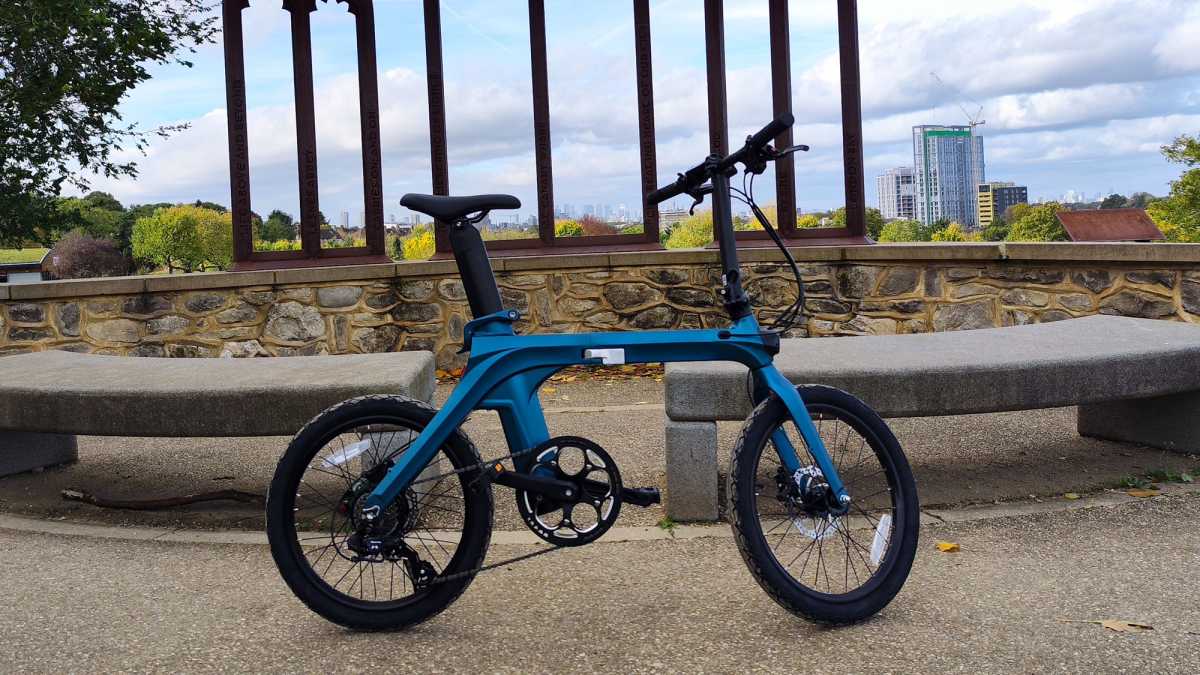
Jim Martin / Foundry
The only options when purchasing are whether you go for the 250W or the 350W motor. The latter has a higher top speed of 19.2mph (32kmh) while the former is limited to 15.5mph/25kmh.
The only other difference is in range, because the higher-power motor reduces this from a claimed 130km to 110km.
It’s unusual that the configurator allows you to select the 350W model for the UK and EU, since you can ride an e-bike on roads only if it is limited to 15.5mph/25kmh.
Weighing in at a smidge under 20kg (43lb), the Fiido X doesn’t challenge for the “lightest” crown. It’s a good couple of kg heavier than the MiRider One, and the Gocycle G4, but its huge 417.6Wh battery makes up for this by allowing the Fiido X better range than both those bikes.
However, the one thing the Fiido X lacks is suspension, which both the MiRider and Gocycle have.
The Gocycle is a lot more expensive, though, and the fact that the Fiido X has 20in wheels like the Gocycle – 4in bigger than the Mirider – means ride comfort isn’t completely sacrificed.
And although the Fiido X has seemingly suffered the same unpleasant price rise that many other electric bikes have, it still offers a good specification for the money.
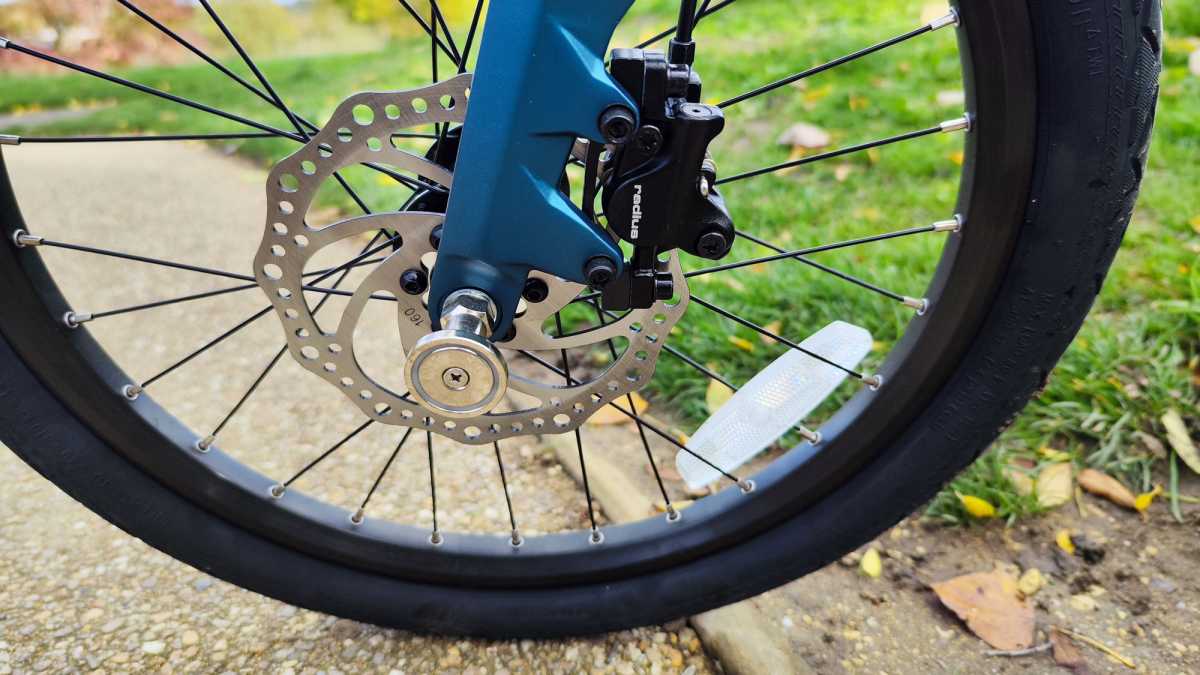
Jim Martin / Foundry
There are hydraulic disc brakes, for example, which have much better feel than cable-operated mechanical brakes. Most importantly, there’s a torque sensor. Cheaper electric bikes make do by detecting only when the rider is pedalling, often meaning a jerky, scary experience as the motor thrusts you forward violently.
A torque sensor – as the name suggests – measures how hard you’re pedalling and tells the motor to deliver power accordingly. In other words, pedal gently, and the motor will provide gentle assistance. Pedal hard and you’ll get much more assistance. This feels much more natural, and also makes you feel super-fit as you power up hills and away from traffic lights.
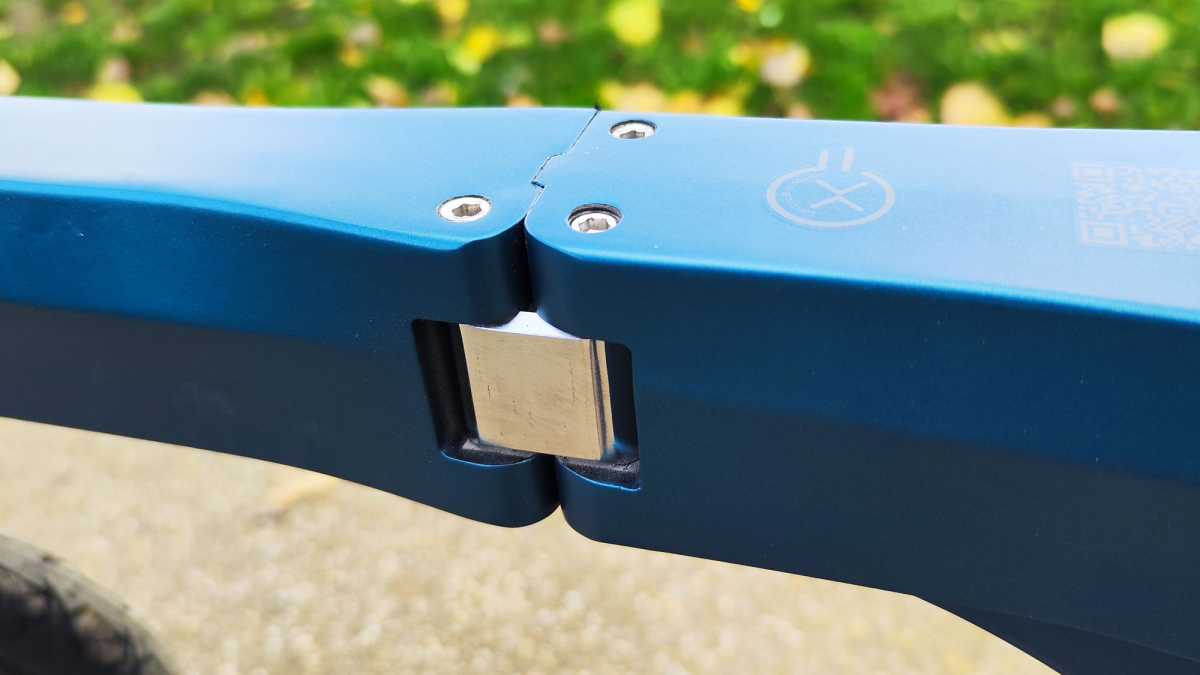
Jim Martin / Foundry
Fiido has made a number of other improvements in the V2 model including a softer saddle, a derailleur guard, better cable protection (to mitigate against damage), an improved folding clamp and 20% more frame strength.
Talking of the frame, Fiido sent over diagrams to show exactly how the hinge has been redesigned to prevent fractures in the frame. I won’t bore you with the details, partly because I’m not a structural engineer and therefore can’t say anything sensible about whether the changes are sufficient or not. Let’s just say they certainly seem convincing.
As you can see, front and rear lights are built in, which is always good.
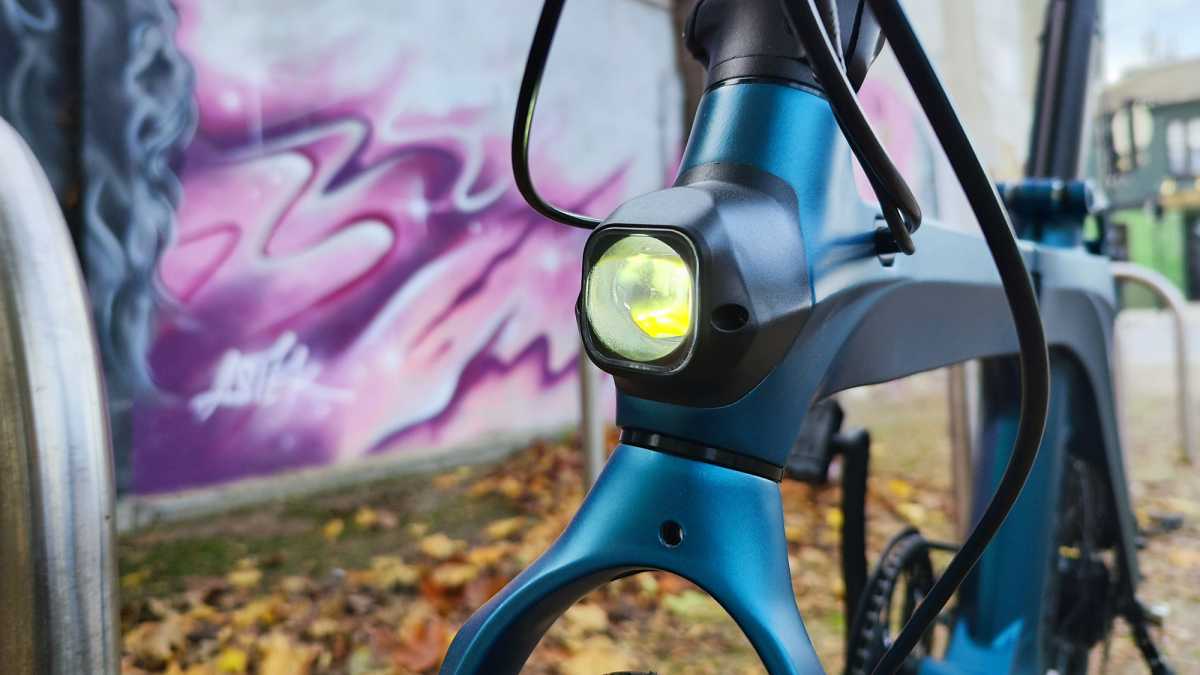
Jim Martin / Foundry
A unique feature is the keypad beneath the rear light. Under a plastic cover are ten numeric buttons with power and padlock keys. Until you enter the correct five-digit sequence, the bike will not power on.
The same code is used with the padlock button to release the seatpost so the battery can be removed from the bike. Without entering the code, the seat height can be adjusted after lifting the quick-release bar, but cannot be slid completely out of the frame, making this an anti-theft feature.
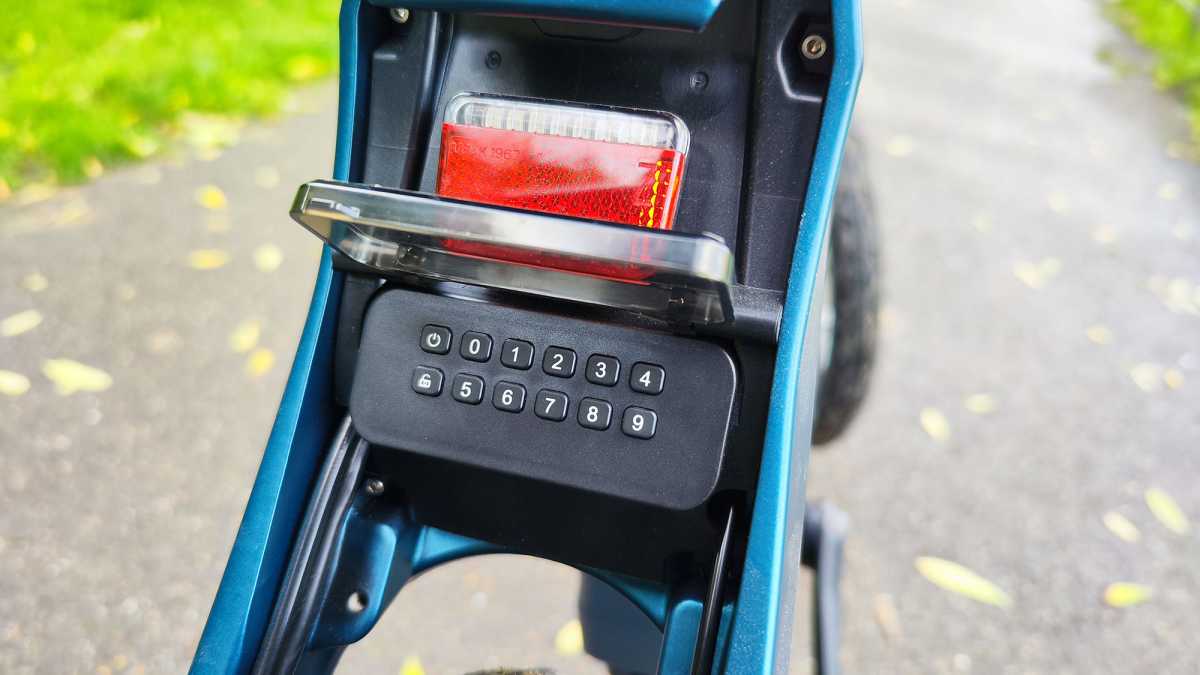
Jim Martin / Foundry
It’s a shame Fiido didn’t go one step further and put a lock in as VanMoof has to stop a thief riding off with your bike.
I struggled at first with the keypad. It has its own power button, separate to the power button on the battery. You must only power on the battery after the keypad, but before entering the code. Deviate from this order and the code won’t do anything, even if you hear the long “success” beep.
However, you get used to it pretty quickly and it does mean there’s no need to remember keys or to use an app.
There is an app – Fiido Smart Lock – but it is extremely rudimentary and appears to be used only for changing the default passcode and for updating the bike’s firmware.
Fiido says it will work on making the app prettier and adding more features.
The main problem with the keypad, though, is that it isn’t going to act as the theft deterrent Fiido says it will: a thief will take the bike and only later realise they can’t activate the motor.
And there is no tracking system built in as on VanMoof and Cowboy bikes.
Ultimately, you’ll need to lock up your Fiido X securely, just like any bike.
Like most folding bikes, there’s no real assembly required. Simply remove it from the box, cut the cable ties, slot in the battery (the saddle is already mounted to it) and use the supplied spanner to attach the pedals.
The only gotcha is that you need to undo the handlebar quick-release clamp and rotate the handlebars as they’re turned round for transport. It’s also recommended that you fully charge the battery before riding for the first time.
Performance
- Quiet motor
- Lots of torque
- No frame flex
I’ve ridden lots of folding electric bikes and almost all of them flex in a way that constantly reminds you that you’re riding a fold-up bike.
Not the Fiido X V2. Its frame is so rigid that there is no noticeable flexing at all and I did forget I was on a folding bike.
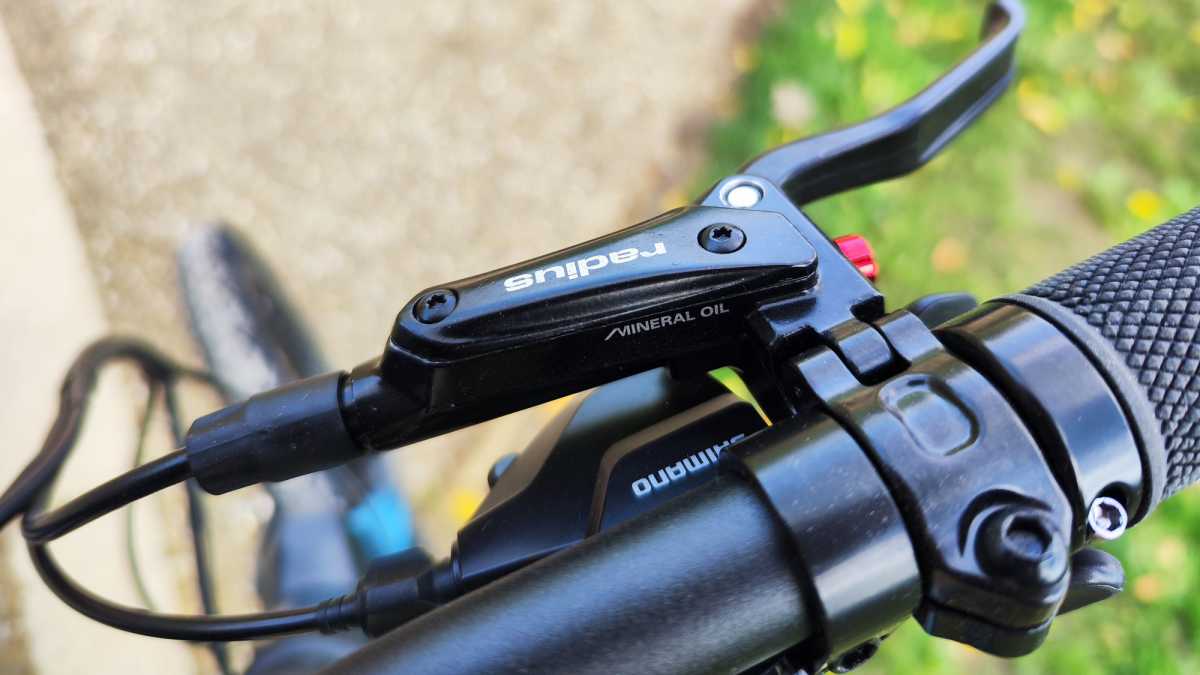
Jim Martin / Foundry
Ride quality is reassuringly good as a consequence. But there are other factors which contribute to this, including the grippy tyres, the fade-free disc brakes and – most of all – the intuitive electric motor assistance.
It matters not that most of the components are from brands the Westerners haven’t heard of. They are good quality.
I was most impressed by how quiet the motor remained even under load. Some are almost inaudible when riding along flat roads, but they become noisy when cycling up steep hills, as that’s when they need to work their hardest.
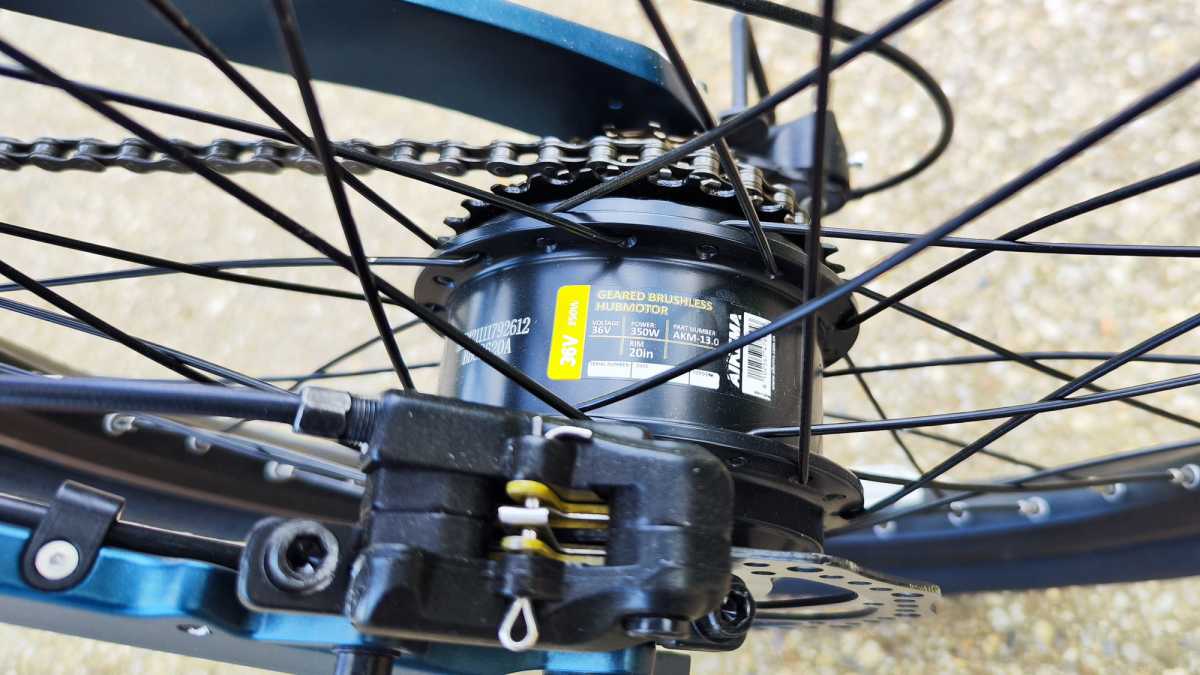
Jim Martin / Foundry
There’s plenty of power on tap, too, which saw me able to climb my local Big Hill at a good pace. The only caveat here is that Fiido sent me the 350W model, but if you live in Europe – including the UK – you’ll need to choose the 250W one if you want to ride on the roads legally.
Fiido doesn’t publish the torque specs of each motor, but it’s likely the 250W version has around 30% less torque.
The torque sensor is built into the bottom bracket, and the system works brilliantly. Power comes in smoothly, and fades out when you reach the 25km/h / 15.5mph limit. I preferred the middle of the three modes, though it’s still fun to use the power-sapping mode 3 when you want maximum acceleration.
It’s also possible to ride with no motor assistance at all, and there’s no noticeable drag from the motor when you do this.
It’s worth pointing out that there is no throttle and that, unlike bikes which use cadence sensors, you do have to put some effort in to ride the Fiido X. You can’t merely turn the pedals with no effort let the motor do all the work. In this respect, the Fiido X is a bike that will appeal to those who really love cycling.
The seven-speed Shimano system is geared around the legal speed limit, so while it’s possible to get up to about 20mph in top gear, it requires you to spin your legs too fast for comfort.
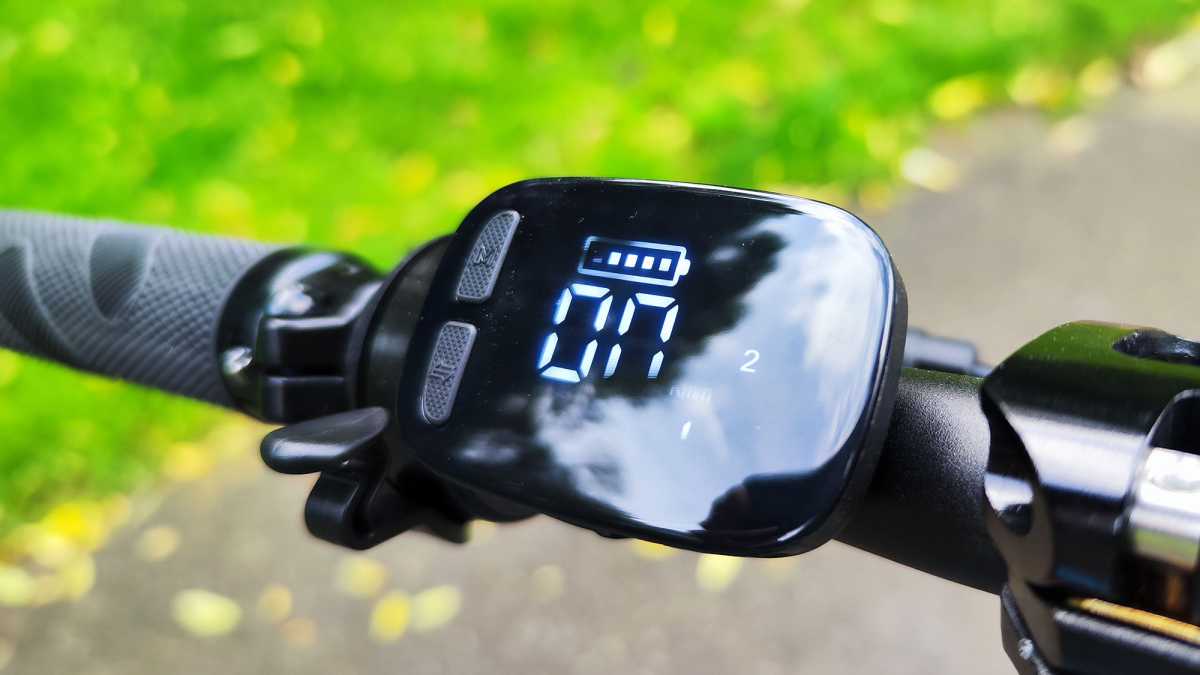
Jim Martin / Foundry
However, the Fiido X isn’t designed for high speeds: it’s really aimed at commuters. And the low gearing helps when you’re riding without the motor.
If there are criticisms to be levelled, one is that you need to stick to smooth roads for a comfortable ride. Potholes must be avoided, and even recessed drain covers can upset the Fiido X.
It isn’t too bad on gravel paths, and the soft saddle helps to soak up minor bumps. Still, some people will prefer to look elsewhere for a bike with suspension.
I’m fairly short, so the riding position was fine for me. But I can see that taller people might want the ability to raise the handlebars a bit, a feature the Fiido X does not offer.
The seat post raises much higher than on most bikes, so it does cater for even the tallest riders.
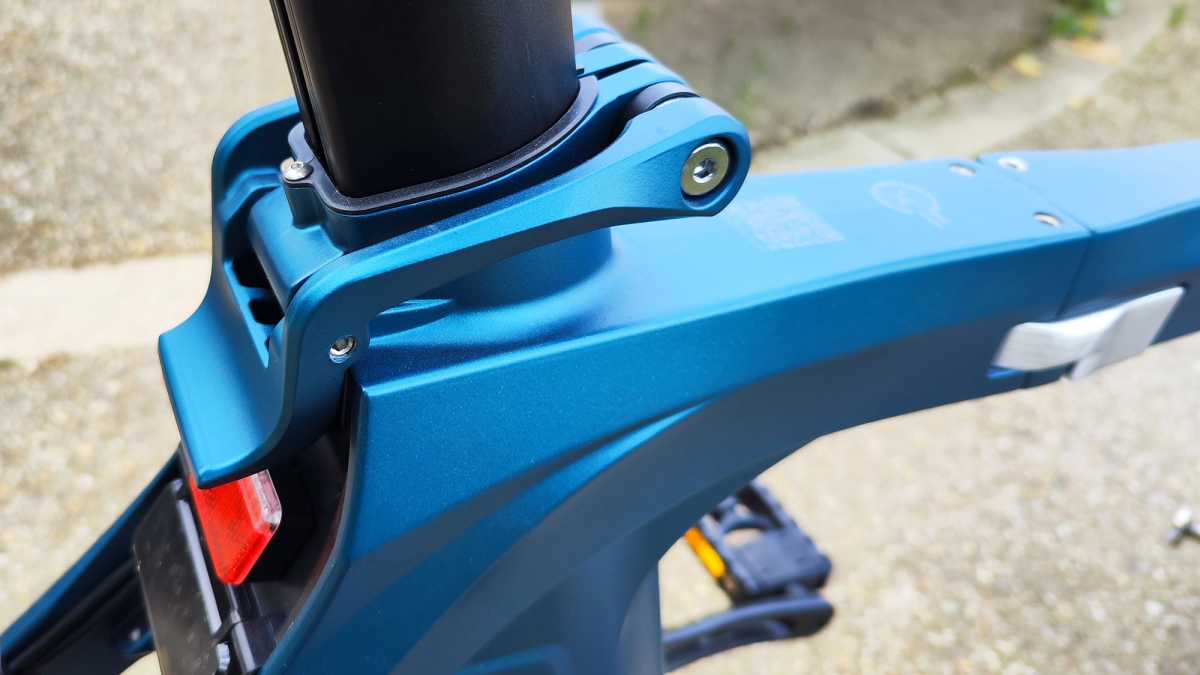
Jim Martin / Foundry
The only other issues I encountered included the power turning off when I adjusted the seat height mid ride. Unlike the older D11, the battery has built-in rails for transferring power instead of a plug-in power cable. This is much neater, but it definitely didn’t appreciate being moved while the power was turned on.
Last, I found that the speedometer tops out at 25kmh / 15mph, regardless of your actual speed. I queried this with Fiido, who thanked me for pointing it out and said they would work on fixing it.
Thanks to the large battery capacity, range is pretty good. As always, it’s very difficult to give you an exact figure because it depends upon the weather (temperature), your weight, the terrain and other things including which power mode you use.
Fiido claims up to 130km (81 miles) for the 250W version, and 110km (68 miles) for the 350W. Those are, of course, the best-case scenario.
In reality, you’ll probably get somewhere between 50km (30 miles) and 85km (55 miles), which is very respectable.
Charging the battery from empty is an overnight job: around seven hours in total.
There’s an easy-to-miss USB port on the handlebar display, which you can use to keep a phone topped up – handy if you buy a mount and use it for navigation.
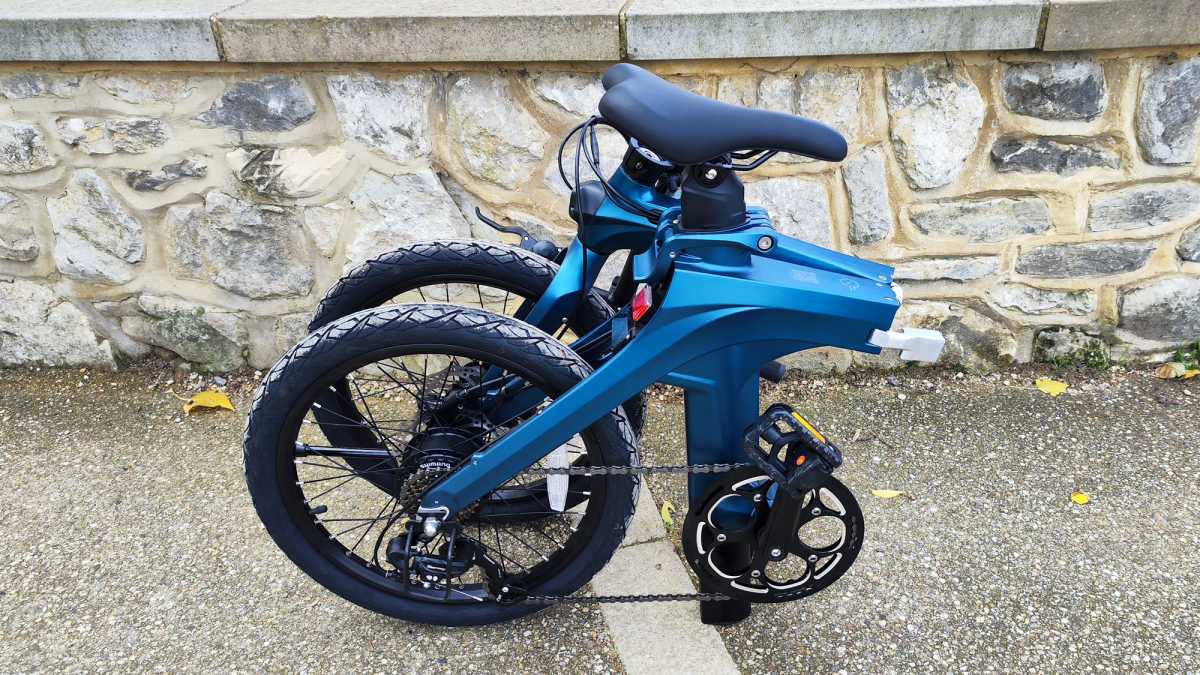
Jim Martin / Foundry
Folding is quick and easy, and powerful magnets keep the wheels firmly together in the folded position. There’s no stand or anything to stop the bike resting on the bottom edge of the seatpost battery when folded, though.
Unfolding is similarly fast, but the catch for the main frame hinge requires quite a lot of force to lock it into position. It’s important to use a flat palm to make sure your hand doesn’t get pinched.
Usefully the seatpost has height markings so you can adjust it to the correct height by sight.
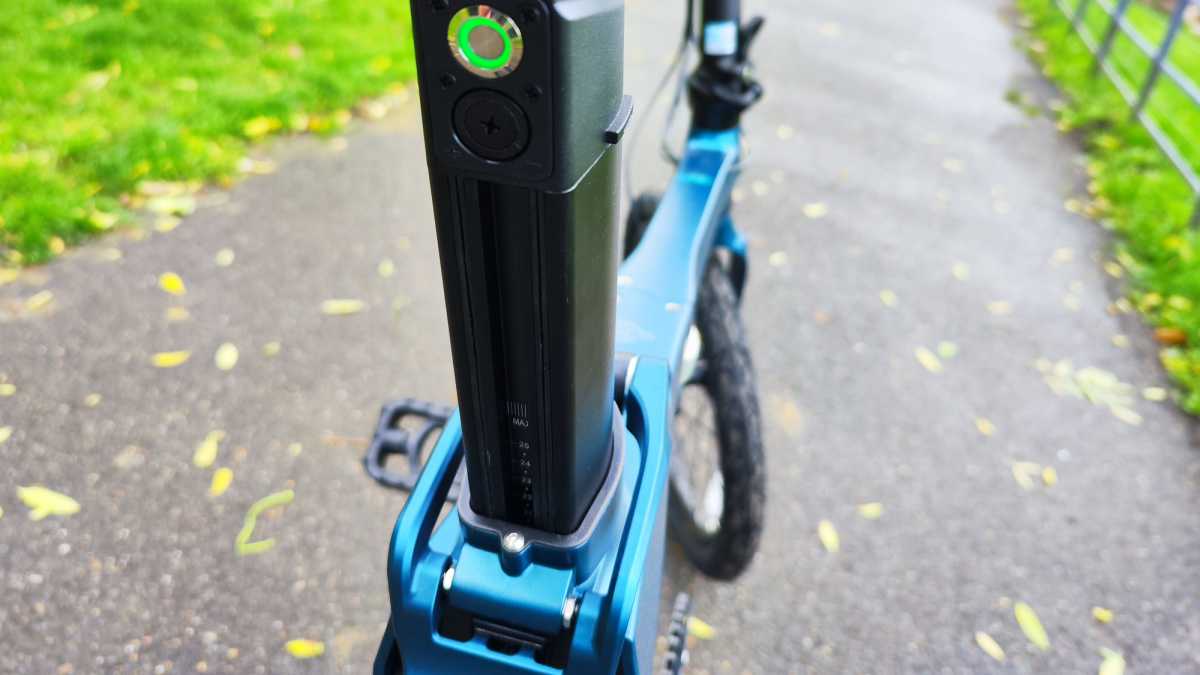
Jim Martin / Foundry
Price & availability
As Fiido is a direct-to-consumer brand – like Dyson for vacuum cleaners – you can buy an X V2 from the company itself.
It costs US$1799, which translates to about £1600 – there is no option but to pay in US Dollars. In Canada it costs $1999. There’s no difference in price regardless of whether you pick the 250- or 350W model, and both come with the same battery.
Shipping is free and at the time of review it was possible to use a coupon “FX20” to get $200 off. Also, Fiido was bundling a kickstand (normally $23) and mudguards ($44) free at the time of review.
Optional accessories also include a phone mount ($22), a handlebar bag ($25) and a rear luggage rack ($50). You can also buy additional batteries for $488.
Even at full price, the Fiido X V2 is good value, but it’s worth bearing in mind that the warranty probably isn’t what you’re used to. Plus, duration varies according to the component in question. Only the frame has a three-year warranty…
